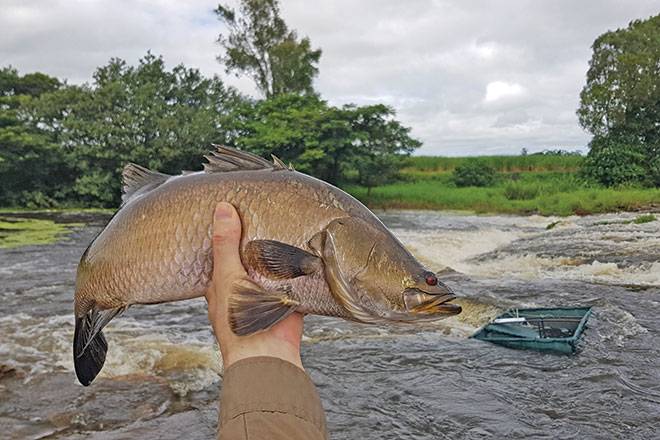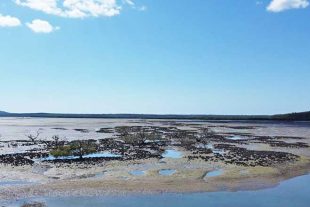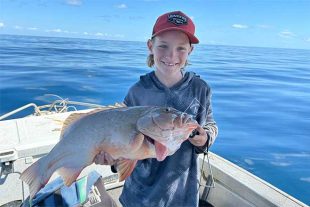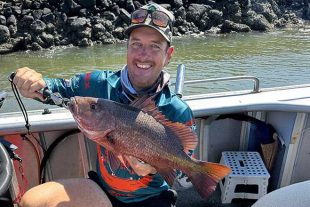When we’re out fishing, most of the fish we catch – and many we don’t – need to migrate at some point in their lifecycle, due to resource limitation or to breed. fishways
Around Australia, there are thousands of physical barriers to fish movement and passage, limiting the ability of fish to migrate, reducing the total amount of habitat available and placing further pressure on fish stocks that are often already under stress.
Some of our fish migrate strictly within freshwater environments, however many also need to migrate between freshwater and saltwater habitats.
To take an example from the rivers and wetlands of north Queensland, barramundi, mangrove jack, tarpon and jungle perch migrate between freshwater and saltwater at least once as part of their lifecycle.
These are the more visible species because they’re popular for recreational anglers, yet many of the smaller species that underpin the food chain – including many of the gobies and gudgeons – need to undertake similar migrations.
In an ideal world, we would simply remove all the barriers to fish passage and restore the hydrology back to its original state, however this is rarely possible or feasible.
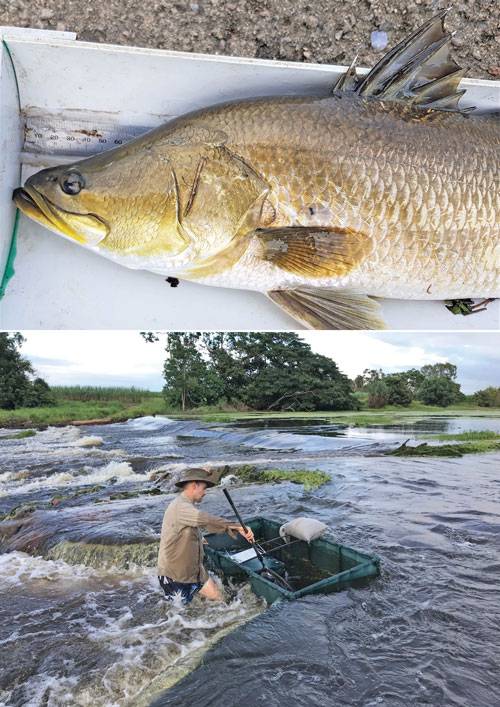
In most cases, the physical infrastructure contributing to this issue is essential for things such as transport, water storage and municipal stormwater conveyance.
Fishways provide a solution to this issue by retaining the function of essential infrastructure, while also providing passage for fish.
Fishways come in all shapes and sizes, and their design depends on the location and height of the barrier.
For instance, a fishway built on a large dam or weir will be very different in design to a fishway built at a small culvert or causeway.
In practice, most of the physical barriers to fish passage are small (that is, a vertical drop of <1m), and therefore many of the fishways we see in places such as coastal north Queensland are either rock-ramp, cone-ramp or vertical-slot designs, as they are the most fit-for-purpose.
OzFish’s north Queensland team complete monitoring work at local fishways each wet season.
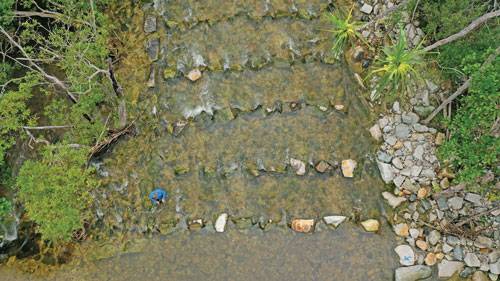
Observation of these structures occurs soon after the fishway has been constructed and the results are reported back to the state government agency responsible for permitting and assessment.
To determine whether a fishway is functioning as intended, we assess a range of factors, including the number of species passing through, the size of fish, water quality and water velocity.
Thousands of fish have moved through these structures over the past few years and were it not for the construction of a fishway, they would not have been able to access the habitat upstream for the infrastructure, such as roads and culverts.
The results from our monitoring work demonstrated the importance of providing fish with migration corridors and increasing the total amount of habitat available to them.
Equally evident from the monitoring work was the need to continue to improve the condition of the habitat that fish are migrating to.
Some of the habitats we work in (creeks and wetlands) are in good condition, with healthy riparian buffer zones, deep refuge pools, minimal aquatic weeds and good water quality.
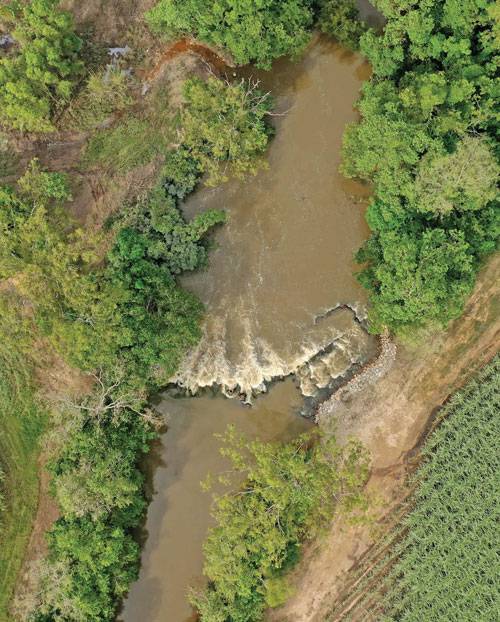
However, many are of very poor quality and are suffering from issues such as erosion, loss of physical habitat structure, sedimentation, build-up of aquatic weeds and poor water quality.
To provide the best benefit to fish stocks, remediating fish-passage barriers must go hand-in-hand with improving the habitat.
Our assessments of fishways provided a first-hand glimpse into fish migration, highlighting the dynamic movement of fish within our waterways and the importance of remediating physical barriers to fish movement and passage.
OzFish are always happy to discuss the results of this important work with anyone interested in fish migration and improving fish habitat.
This wet season, the OzFish team in north Queensland is working with project partners Terrain NRM, Catchment Solutions, Lower Burdekin Water and NQ Dry Tropics to monitor fishways in the lower Herbert, Cardwell and Burdekin regions.
Monitoring is being completed between February and May 2024 and we again expect to see thousands of fish migrating to habitats that were previously inaccessible to them.
Dr Geoff Collins
OzFish Unlimited
 Bush ‘n Beach Fishing Magazine Location reports & tips for fishing, boating, camping, kayaking, 4WDing in Queensland and Northern NSW
Bush ‘n Beach Fishing Magazine Location reports & tips for fishing, boating, camping, kayaking, 4WDing in Queensland and Northern NSW

